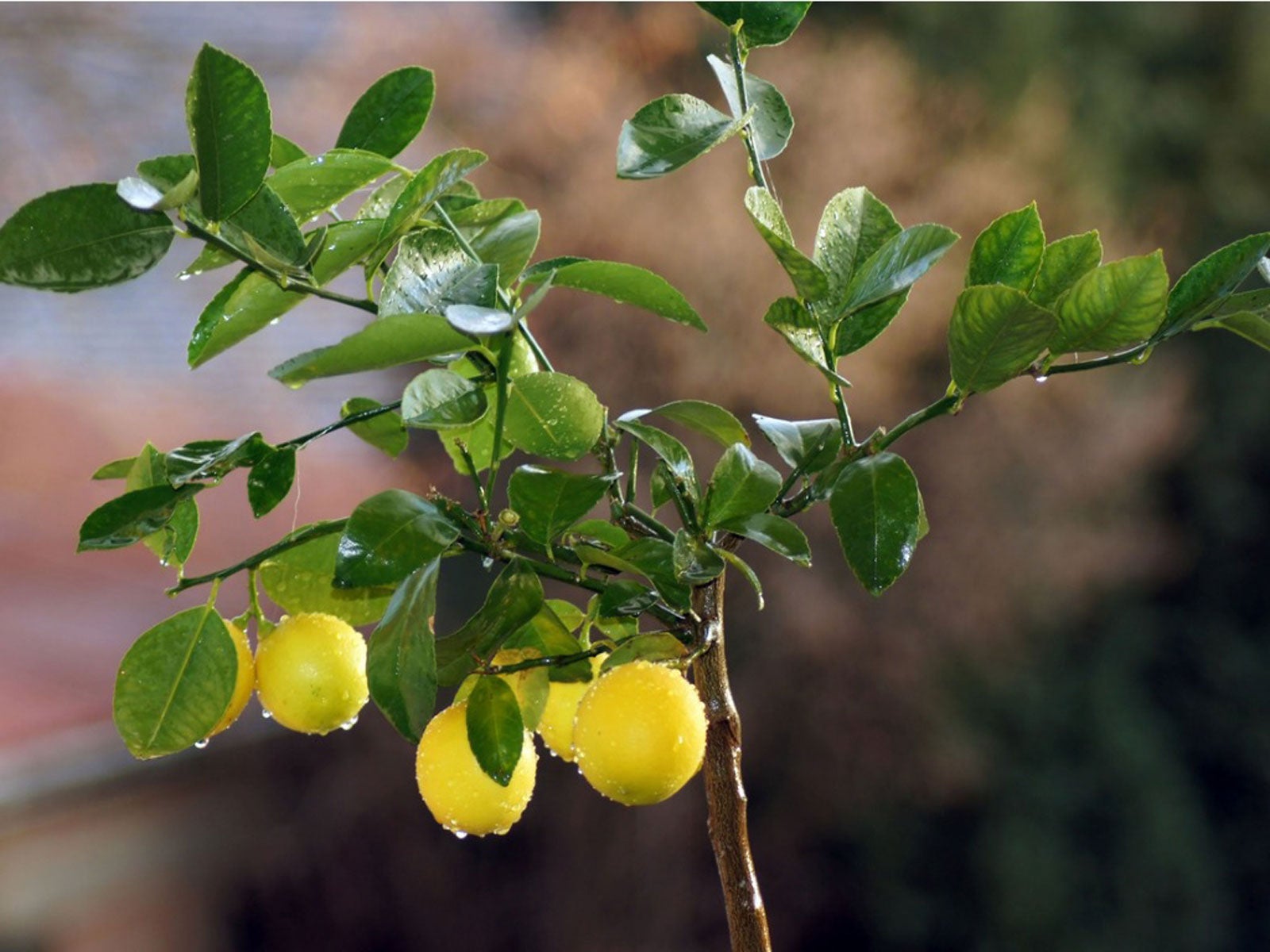Why Is My Lemon Tree Losing Leaves?
If your prized lemon tree is losing leaves it could be suffering from issues like disease, pests, nutrition or environmental problems.

What Leads To Lemon Leaves Falling Off?
Lemon trees are delightful additions to the garden, but they are not free of problems. If you find your lemon tree losing leaves, it can result from any of a number of issues ranging from diseases and pests to improper cultural care. To learn more about the reasons lemon leaves can be dropping, read on.
Disease Problems
Like other citrus, lemon trees are vulnerable to a number of diseases. Any of these might result in lemon leaf drop. It helps to get a tree that will thrive in your hardiness zone and has resistance to some of these diseases.
Anthracnose
Anthracnose is a fungal disease that causes premature leaf drop. Look for leaves and shoots covered with dark spores. Treat with fungicides.
Armillaria root rot
Armillaria root rot is another fungal issue that causes lemon trees to wilt, yellow, and drop. The damage depends on how much of the roots are destroyed. Look for rotting bark at the base of the trunk and mushrooms clustered there as well. This disease is difficult to treat and experts recommend removing the tree entirely with as the roots as possible.
Bacterial Blast
Sign up for the Gardening Know How newsletter today and receive a free copy of our e-book "How to Grow Delicious Tomatoes".
This disease also causes falling leaves. Recognize this infection by the black lesions that appear on the leaves, causing the blades to curl, dry, and drop. This can be treated by copper fungicides applied before the first rains in autumn.
Botrytis rot
Botrytis rot is also a fungal issue and the fungus can infect and kill young shoots after prolonged rain in coastal areas.
Citrus Greening
If leaf veins or entire branches yellow, your lemon tree could be battling citrus greening, a bacterial disease transmitted by insects. The only control of citrus greening that can be achieved is through prevention. Be sure that the citrus psyllids carrying the disease do not come in contact with the tree.
Greasy Spot
Greasy spot fungus shows up on your lemon tree as yellow spots on the upper side of the leaf. These transform into blister and look greasy. The diseased lemon leaves fall and fruit set is decreased. Copper fungicide treatment can help.
Mal secco
The first signs of the fungal disease mal secco include pale veins on wilting leaves and silver-grey infected bark. Prune out diseased branches as quickly as possible and don’t irrigate from above. Copper fungicides are efficient in offering protection.
Phytophthora
Phytophthora is a soil-borne pathogen that can infect citrus trees. Your tree may show signs of weakness and slow collapse, or seem like they’re drought stressed even when they’re being properly watered. Leaves may appear dull or fade to yellow, red, or purple long before fall sets in.
Tristeza
Tristeza is caused by a virus that creates pale foliage, stunted, yellowing leaves, and leaf drop. It spreads via infected grafting material or by aphids. This is difficult to treat.
Pest Problems
Insects can also cause lemon tree leaves to drop prematurely. Here are some of the worst culprits.
Citrus Rust Mite
Citrus rust mite causes small fruit and leaf drop. The mites often move in in April, attacking new foliage. Peak populations occur in June and July, declining in August and September. Horticultural oil is an effective tool.
Soft Scale
These insects cover lemon leaves in a sticky substance, causing leaf drop as well as reduced tree vigor. Use horticultural oils to treat soft scale.
Nutrient Problems
Boron Toxicity
While boron is one of the elements lemon trees require for health, too much can be toxic to the plant. Look for leaf tip yellowing or mottling. A severe case may cause twig dieback and leaf drop.
Sodium Toxicity
If your water is highly saline or you provide too much fertilizer, your lemon tree may suffer from sodium toxicity. This can look a lot like drought stress. Actual sodium toxicity is associated with the overall leaf "bronzing" and leaf drop.
Environmental Problems
Change in Light
Lemon trees prefer full sunlight. However, those grown in containers may experience excess growth with a sunny placement. Move the plant to a site with partial shade. Above all, avoid prolonged exposure to low light and any rapid changes in light exposure. The latter will cause leaf drop. Acclimate plants from indoors to outdoors and vice versa, gradually.
Change in Temperature
Ideally, your lemon tree will experience a minimal range of temperatures. This is a tree that does not require a period of cold to fruit. Rapid temperature changes - including a move from chilly outside air to indoor air - can cause leaf drop.
Hail
Hail is generally not appreciated by any fruit trees. For a lemon tree, hail damage can result in scarring on small branches or fruits. Leaves can be shredded by hail and may drop prematurely.

Teo Spengler is a master gardener and a docent at the San Francisco Botanical Garden, where she hosts public tours. She has studied horticulture and written about nature, trees, plants, and gardening for more than two decades, following a career as an attorney and legal writer. Her extended family includes some 30 houseplants and hundreds of outdoor plants, including 250 trees, which are her main passion. Spengler currently splits her life between San Francisco and the French Basque Country, though she was raised in Alaska, giving her experience of gardening in a range of climates.

